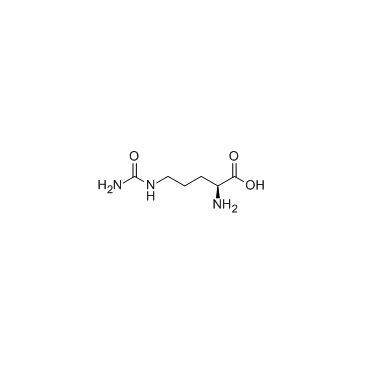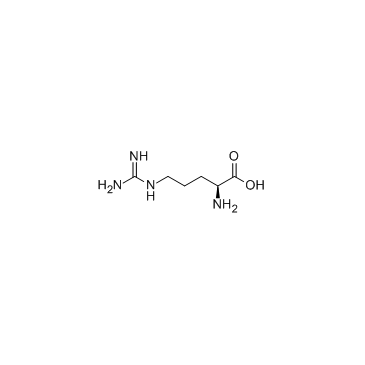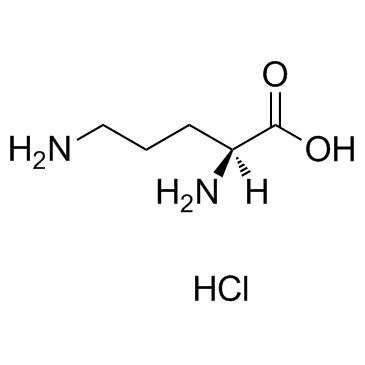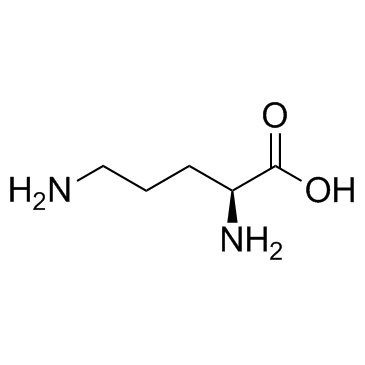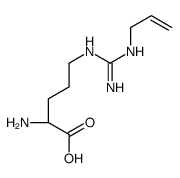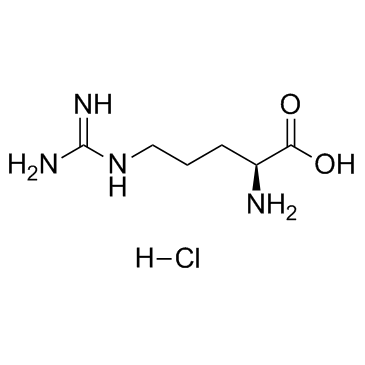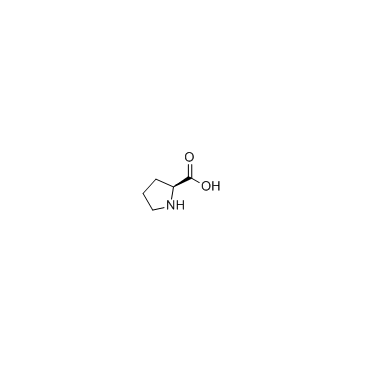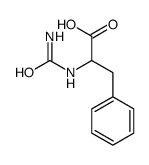372-75-8
| Name | L-citrulline |
|---|---|
| Synonyms |
(2S)-2-amino-5-(carbamoylamino)pentanoic acid
L-(+)-Citrulline α-amino-δ-ureidovaleric acid Sitrulline N5-(Aminocarbonyl)ornithine d-ureidonorvaline (S)-2-Amino-5-ureidopentanoic acid N-Carbamoylornithine anti-citrulline N-[Hydroxy(imino)methyl]-L-ornithine L-2-Amino-5-ureidovaleric acid δ-Ureidonorvaline [14C]-Citrulline (S)-2-Amino-5-ureidopentanoic acid L-2-Amino-5-ureidovaleric acid L(+)-Citrulline L-Cytrulline 2-amino-5-(carbamoylamino)pentanoic acid Nd-Carbamylornithine N5-(Aminocarbonyl)-L-ornithine 2-Amino-5-ureidovaleric acid Nδ-Carbamylornithine L-N5-carbamoyl-Ornithine L-Citrulline N-Carbamoyl-L-ornithine MFCD00064397 2-amino-5-(aminocarbonylamino)pentanoic acid N-(aminocarbonyl)ornithine Citrulline L-Ornithine, N5- (aminocarbonyl)- Ornithine, N-(aminocarbonyl)- a-Amino-d-ureidovaleric Acid L-citrulline zwitterion N(5)-(aminocarbonyl)-DL-ornithine N5-(aminocarbonyl)-Ornithine L-Ornithine, N-(hydroxyiminomethyl)- N5-carbamylornithine L-Ornithine, N-(aminocarbonyl)- N5-Carbamoyl-L-ornithine EINECS 206-759-6 N5-carbamoylornithine (S)-2-amino-5-(carbamoyl amino)pentanoic acid Ornithine, N5-(aminocarbonyl)- H-Cit-OH |
| Description | L-Citrulline is an amino acid derived from ornithine in the catabolism of proline or glutamine and glutamate, or from l-arginine via arginine-citrulline pathway. |
|---|---|
| Related Catalog | |
| Target |
Human Endogenous Metabolite |
| In Vitro | L-Citrulline is an amino acid derived from ornithine in the catabolism of proline or glutamine and glutamate, or from l-arginine via arginine-citrulline pathway. L-Citrulline is also obtained during the degradation of asymmetric dimethylarginine (ADMA), the process catalyzed by dimethylarginine dimethylaminohydrolase (DDAH), yielding dimethylamine (DMA) as a coproduct[1]. |
| References |
| Density | 1.3±0.1 g/cm3 |
|---|---|
| Boiling Point | 386.7±42.0 °C at 760 mmHg |
| Melting Point | 214 °C |
| Molecular Formula | C6H13N3O3 |
| Molecular Weight | 175.186 |
| Flash Point | 187.7±27.9 °C |
| Exact Mass | 175.095688 |
| PSA | 118.44000 |
| LogP | -1.53 |
| Vapour Pressure | 0.0±1.9 mmHg at 25°C |
| Index of Refraction | 1.531 |
| Water Solubility | 200 g/L (20 ºC) |
Synonym:None Section 2 - COMPOSITION, INFORMATION ON INGREDIENTS
Risk Phrases: None Listed. Section 3 - HAZARDS IDENTIFICATION EMERGENCY OVERVIEW
The toxicological properties of this material have not been fully investigated. Potential Health Effects Eye: May cause eye irritation. Skin: May cause skin irritation. Ingestion: May cause gastrointestinal irritation with nausea, vomiting and diarrhea. The toxicological properties of this substance have not been fully investigated. Inhalation: May cause respiratory tract irritation. The toxicological properties of this substance have not been fully investigated. Chronic: No information found. Section 4 - FIRST AID MEASURES Eyes: Immediately flush eyes with plenty of water for at least 15 minutes, occasionally lifting the upper and lower eyelids. Get medical aid. Skin: Flush skin with plenty of water for at least 15 minutes while removing contaminated clothing and shoes. Get medical aid if irritation develops or persists. Ingestion: If victim is conscious and alert, give 2-4 cupfuls of milk or water. Never give anything by mouth to an unconscious person. Get medical aid. Inhalation: Remove from exposure and move to fresh air immediately. If not breathing, give artificial respiration. If breathing is difficult, give oxygen. Get medical aid if cough or other symptoms appear. Notes to Physician: Section 5 - FIRE FIGHTING MEASURES General Information: As in any fire, wear a self-contained breathing apparatus in pressure-demand, MSHA/NIOSH (approved or equivalent), and full protective gear. During a fire, irritating and highly toxic gases may be generated by thermal decomposition or combustion. Extinguishing Media: In case of fire, use water, dry chemical, chemical foam, or alcohol-resistant foam. Section 6 - ACCIDENTAL RELEASE MEASURES General Information: Use proper personal protective equipment as indicated in Section 8. Spills/Leaks: Vacuum or sweep up material and place into a suitable disposal container. Clean up spills immediately, observing precautions in the Protective Equipment section. Section 7 - HANDLING and STORAGE Handling: Wash thoroughly after handling. Wash hands before eating. Remove contaminated clothing and wash before reuse. Use with adequate ventilation. Avoid contact with skin and eyes. Avoid ingestion and inhalation. Storage: Store in a cool, dry place. Keep container closed when not in use. Section 8 - EXPOSURE CONTROLS, PERSONAL PROTECTION Engineering Controls: Use adequate ventilation to keep airborne concentrations low. Exposure Limits CAS# 372-75-8: Personal Protective Equipment Eyes: Wear appropriate protective eyeglasses or chemical safety goggles as described by OSHA's eye and face protection regulations in 29 CFR 1910.133 or European Standard EN166. Skin: Wear appropriate protective gloves to prevent skin exposure. Clothing: Wear appropriate protective clothing to prevent skin exposure. Respirators: Follow the OSHA respirator regulations found in 29 CFR 1910.134 or European Standard EN 149. Use a NIOSH/MSHA or European Standard EN 149 approved respirator if exposure limits are exceeded or if irritation or other symptoms are experienced. Section 9 - PHYSICAL AND CHEMICAL PROPERTIES Physical State: Solid Color: white Odor: None reported. pH: Not available. Vapor Pressure: Not available. Viscosity: Not available. Boiling Point: Not available. Freezing/Melting Point: 220 deg C (decomposes) Autoignition Temperature: Not applicable. Flash Point: Not applicable. Explosion Limits, lower: Not available. Explosion Limits, upper: Not available. Decomposition Temperature: Not available. Solubility in water: Soluble in water. Specific Gravity/Density: Not available. Molecular Formula: C6H13N3O3 Molecular Weight: 175.1093 Section 10 - STABILITY AND REACTIVITY Chemical Stability: Stable under normal temperatures and pressures. Conditions to Avoid: Incompatible materials. Incompatibilities with Other Materials: Strong oxidants. Hazardous Decomposition Products: Carbon monoxide, oxides of nitrogen, irritating and toxic fumes and gases, carbon dioxide. Hazardous Polymerization: Has not been reported. Section 11 - TOXICOLOGICAL INFORMATION RTECS#: CAS# 372-75-8 unlisted. LD50/LC50: Not available. Carcinogenicity: L-Citrulline - Not listed by ACGIH, IARC, or NTP. Section 12 - ECOLOGICAL INFORMATION Section 13 - DISPOSAL CONSIDERATIONS Products which are considered hazardous for supply are classified as Special Waste and the disposal of such chemicals is covered by regulations which may vary according to location. Contact a specialist disposal company or the local waste regulator for advice. Empty containers must be decontaminated before returning for recycling. Section 14 - TRANSPORT INFORMATION IATA No information available. IMO No information available. RID/ADR No information available. Section 15 - REGULATORY INFORMATION European/International Regulations European Labeling in Accordance with EC Directives Hazard Symbols: Not available. Risk Phrases: Safety Phrases: S 24/25 Avoid contact with skin and eyes. WGK (Water Danger/Protection) CAS# 372-75-8: 0 Canada CAS# 372-75-8 is listed on Canada's NDSL List. CAS# 372-75-8 is not listed on Canada's Ingredient Disclosure List. US FEDERAL TSCA CAS# 372-75-8 is listed on the TSCA inventory. SECTION 16 - ADDITIONAL INFORMATION N/A |
| Personal Protective Equipment | Eyeshields;Gloves;type N95 (US);type P1 (EN143) respirator filter |
|---|---|
| Hazard Codes | Xi |
| Risk Phrases | R36/37/38 |
| Safety Phrases | S24/25 |
| RIDADR | NONH for all modes of transport |
| WGK Germany | 3 |
| HS Code | 29241900 |
| Precursor 8 | |
|---|---|
| DownStream 8 | |
| HS Code | 2924199090 |
|---|---|
| Summary | 2924199090. other acyclic amides (including acyclic carbamates) and their derivatives; salts thereof. VAT:17.0%. Tax rebate rate:13.0%. . MFN tariff:6.5%. General tariff:30.0% |
